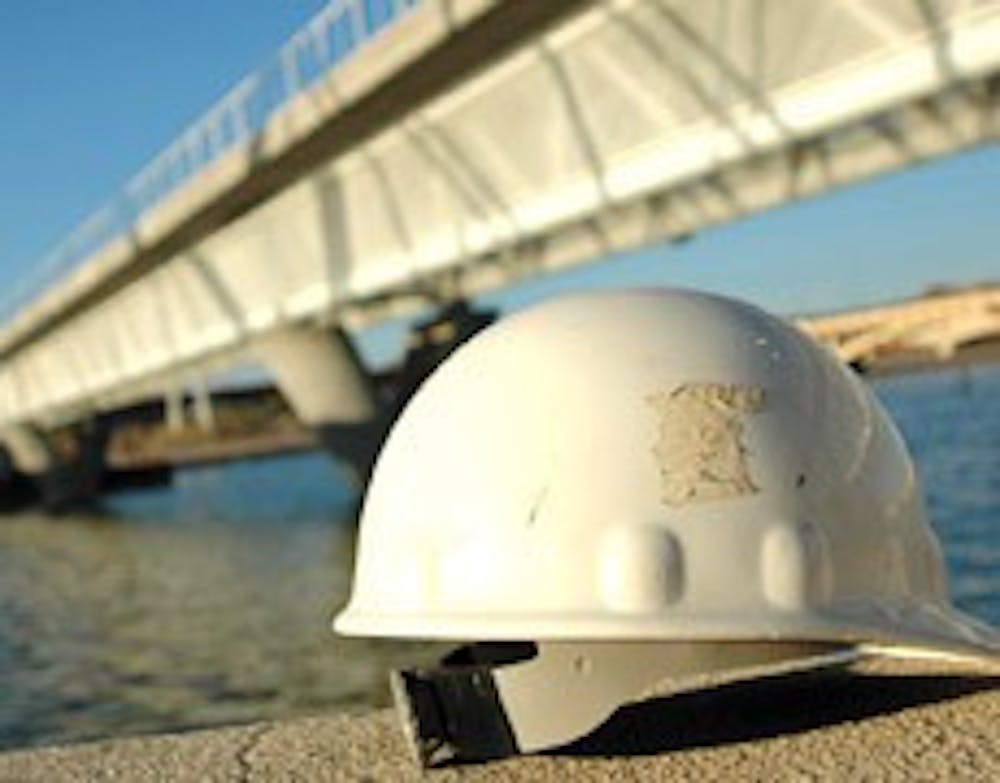As light-rail construction equipment continues to rumble outside ASU's Tempe and Downtown Phoenix campuses, President Michael Crow said he would like to expand the service to all ASU campuses.
"My hope would be that public light-rail infrastructure will ultimately, over time, be connecting all of our educational institutions," he said. "That will break down yet another barrier to access to those institutions."
Light rail is part of the University's mass transit push and the expansion could help ease some of the University's transportation problems, Crow said.
"We have our own traffic problems and our own pollution problems," Crow said. "If we don't figure out how to deal with those kinds of problems right now we're in big trouble."
University spokeswoman Terri Shafer emphasized that ASU plays no formal role in the light-rail planning process.
"While it makes sense to connect ASU's four campuses by light rail, the University is not responsible for determining where the light rail will run," she said in an e-mail.
The light-rail line currently under construction was approved in 2000 using funding from the cities involved and, under current plans, would connect the Tempe and Phoenix campuses.
It would begin in central Phoenix north of Bethany Home Road, head south along 19th and Central Avenues, then east on Van Buren Street. In Tempe, the line would cross southeast to Apache Boulevard and end on Main Street in Mesa, just west of Alma School Road.
Extensions to the plan are more hazy, said Marty McNeil, a spokeswoman for Metro light rail.
"The only thing that we could really say for certain is that [Tempe and Phoenix] campuses will be connected for sure in December 2008," she said.
Proposed extensions would continue mass transportation routes, especially light rail, farther east in Mesa, south in Tempe along Rural Road and across Phoenix, and into Glendale.
Voters approved the extensions in 2004 as part of Proposition 400, by continuing a half-cent sales tax.
Connecting the West campus, which rests on the border between north Phoenix and Glendale, and the Polytechnic campus, located in Mesa, would require altering the general alignments approved by voters, said Phoenix City Councilman Tom Simplot, who is also chairman of the Valley Metro Board of Directors.
A public discussion followed by a decision-making process at the city and regional levels will take place in the next 12 to 18 months, Simplot said.
The decision would ultimately rest with the city councils in the respective cities and the Valley Metro Board of Directors, Simplot said.
The Maricopa Association of Governments, Arizona Department of Transportation and Valley Metro's Regional Public Transportation Authority would possibly play a role in the decision.
Simplot said he had not spoken with Crow about connecting the campuses, but did say "there have been discussions at levels lower than Dr. Crow."
Simplot declined to say who was involved with the discussions and stressed they had only taken place informally.
"On a scale of one to 10 for where we are [on this process], we're at 0," he said.
Though connecting ASU's Polytechnic and West campuses would take significant adjusting, Simplot said connecting the Scottsdale SkySong Innovation Center would be much harder.
"[It would be] a huge hurdle," he said.
Simplot said Scottsdale doesn't have tax money put aside and are not included in the Regional Transportation Plan because city leaders chose not to participate in light rail.
"None of those other cities are going to put in their tax money that would go into [Scottsdale]," he said. "Their voters need to approve funding."
Spokespersons for the mayors of Mesa and Scottsdale said they have not discussed the possibility with Crow. Glendale Mayor Elaine Scruggs could not be reached for comment.
Reach the reporter at: james.kindle@asu.edu.




